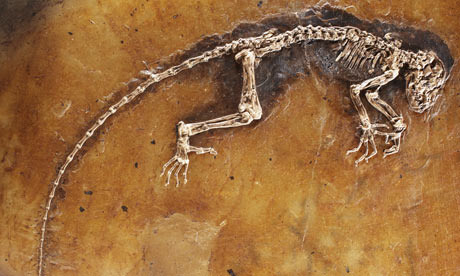TOP STORIES Designer Antibodies Derail Monkey AIDS Virus
Designer Antibodies Derail Monkey AIDS Virus
ScienceNOW Daily News - sciencenow.sciencemag.org
18 May 2009
J Cohen
Photo credit: Malcolm Linton
Researchers are reporting that a new antiviral strategy powerfully protects monkeys from SIV, the simian cousin of HIV. The approach combines elements of vaccines and gene therapy, and experts say the development could eventually lead to a vaccinelike weapon against AIDS--a goal that has thus far proved elusive.
Vaccines work by priming the "adaptive" immune system to recognize and attack a specific invader. But despite 2 decades of research, several potential AIDS vaccines have failed to teach the immune system to produce antibodies that can stop HIV.
Still, some progress has been made: Researchers have isolated a handful of antibodies from HIV-infected humans that stymie HIV in test-tube studies. Intensive efforts have attempted to find the proteins or peptides that could teach the immune system to produce these powerful antibodies, yet none has made progress.
 Growth Industry: Honeybee Numbers Expand Worldwide as U.S. Decline Continues
Growth Industry: Honeybee Numbers Expand Worldwide as U.S. Decline ContinuesScientific American - www.scientificamerican.com
18 May 2009
K Harmon
Photo credit: Flickr/Cygnus921
Even as U.S. honeybee populations have been hit hard by colony collapse disorder in recent years, domesticated beehives have been thriving elsewhere.
In an analysis of nearly 50 years of data on bees from the United Nations Food and Agriculture Organization, researchers found that domesticated honeybee populations have increased about 45 percent, thanks in large part to expansion of the bees into areas such as South America, eastern Asia and Africa. The results appear in the latest issue Current Biology.
The overall increase, however, is not what surprised Marcelo Aizen, a professor at the National University of Comahue in Buenos Aires, Argentina, and lead author of the study. Instead, he was taken aback by the sixfold increase in the growth rate of crops that depend on domesticated bees for pollination.
Cited Journal Article
>>>The Global Stock of Domesticated Honey Bees Is Growing Slower Than Agricultural Demand for Pollination. Current Biology. 2009 May 07. Epub ahead of print.
Skip this cocktail party
EurekAlert - www.eurekalert.org (Source: Woods Hole Oceanographic Institution)
20 May 2009
The most extensive study of pollutants in marine mammals' brains reveals that these animals are exposed to a hazardous cocktail of pesticides such as DDTs and PCBs, as well as emerging contaminants such as brominated flame retardants.
Eric Montie, the lead author on the study currently in press and published online April 17 in Environmental Pollution, performed the research as a student in the Woods Hole Oceanographic Institution-MIT Joint Graduate Program in Oceanography and Ocean Engineering and as a postdoctoral fellow at the Woods Hole Oceanographic Institution (WHOI). The final data analysis and writing were conducted at College of Marine Science, University of South Florida, where Montie now works in David Mann's marine sensory biology lab.
Co-author Chris Reddy, a senior scientist in the WHOI Marine Chemistry and Geochemistry Department, describes the work as "groundbreaking because Eric measures a variety of different chemicals in animal tissues that had not been previously explored. It gives us greater insight into how these chemicals may behave in marine mammals."
Cited Journal Article
>>>Organohalogen contaminants and metabolites in cerebrospinal fluid and cerebellum gray matter in short-beaked common dolphins and Atlantic white-sided dolphins from the western North Atlantic. Environ Pollut. 2009 Apr 16. Epub ahead of print.
 Heat-tolerant Coral Reefs Discovered: May Survive Global Warming
Heat-tolerant Coral Reefs Discovered: May Survive Global WarmingScienceDaily - www.sciencedaily.com (Source: Stanford University)
19 May 2009
Photo credit: Tom Oliver
Experts say that more than half of the world's coral reefs could disappear in the next 50 years, in large part because of higher ocean temperatures caused by climate change. But now Stanford University scientists have found evidence that some coral reefs are adapting and may actually survive global warming.
"Corals are certainly threatened by environmental change, but this research has really sparked the notion that corals may be tougher than we thought," said Stephen Palumbi, a professor of biology and a senior fellow at Stanford's Woods Institute for the Environment.
Palumbi and his Stanford colleagues began studying the resiliency of coral reefs in the Pacific Ocean in 2006 with the support of a Woods Institute Environmental Venture Project grant. The project has expanded and is now being funded by Conservation International and the Bio-X program at Stanford.
Cited Journal Article
>>>Distributions of stress-resistant coral symbionts match environmental patterns at local but not regional scales. Mar Ecol Prog Ser. 2009 Mar 12; 378: 93-103.

WILDLIFE HEALTH RELATED NEWS
Photo credit: Atlantic Productions Ltd
 Attenborough on Ida: this little creature is going to show our connection with all other mammals
Attenborough on Ida: this little creature is going to show our connection with all other mammals 
- Dead deer give up secrets about species
- Antarctica Overvisited

- Owls replace pesticides in Israel
- Blue Whales Returning to Alaska
- Endangered wombat numbers rising in Qld
- Fight to save furry icon as koala population plunges
- California's Lost Salmon

- It's nature's law: When people arrive, animals vanish
Browse complete Digest publications library here.
Trichinella britovi in a leopard (Panthera pardus saxicolor) in Iran
Veterinary Parasitology. 2009; Epub ahead of print
G Mowlavia et al.
Prevalence of Chlamydophila psittaci in wild birds—potential risk for domestic poultry, pet birds, and public health?
European Journal of Wildlife Research. 2009; Epub ahead of print
D Zweifel1 et al.
De Novo Generation of Infectious Prions In Vitro Produces a New Disease Phenotype
PLoS Pathog. 2009; 5(5): e1000421 [free full-text available]
MA Barria




